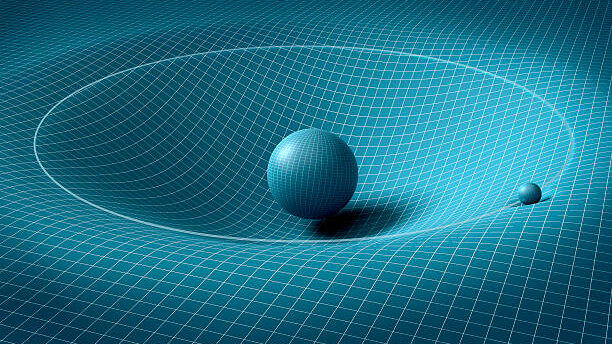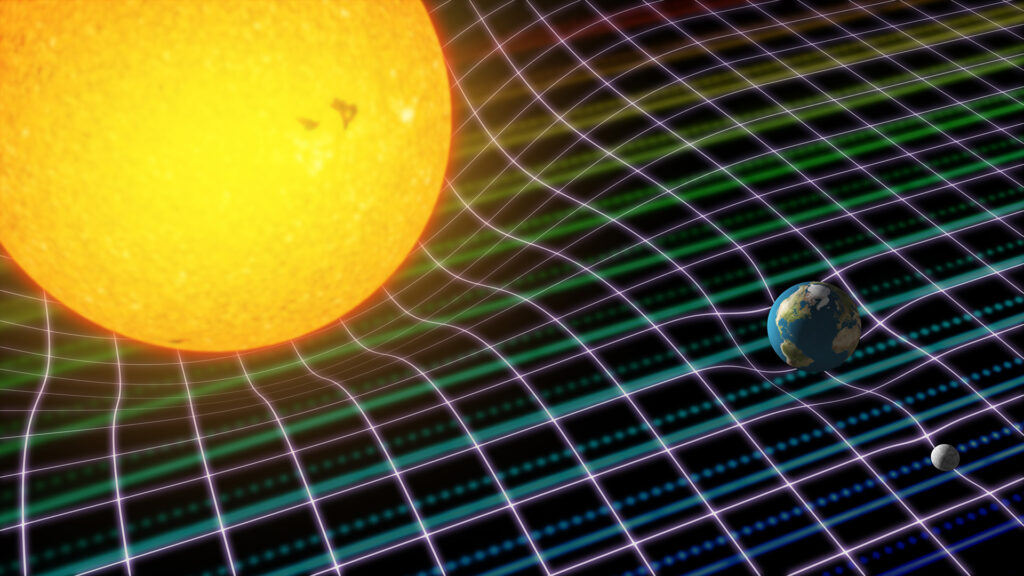You’ve probably noticed it: things keep falling. Whether it’s your keys at the worst possible moment or your phone diving off the table right as you need it. It’s not just bad luck—there’s something more sinister at play: gravity. And this pesky force isn’t just a daily nuisance; it’s a cosmic player, shaping everything from apples dropping from trees to the orbits of planets and galaxies. But what is gravity, really?
The Obsession with Falling Objects
Throughout history, brilliant minds have pondered why things fall. From ancient philosophers to the most cutting-edge scientists, the question remains the same: Why does stuff fall down?
The answer, of course, is gravity, the inescapable force that pulls everything toward the Earth—or any other massive object in space. Unlike electromagnetic forces, gravity can’t be turned off. There’s no such thing as “gravitational shielding” (sorry, sci-fi fans). Gravity is always there, everywhere in the universe, and no matter how far you go, it never fully disappears. It weakens, sure, but it’s always lurking, waiting for its next victim… like your breakfast cereal tumbling to the floor.
Newton’s Big Idea: Why the Planets Stay Put
Isaac Newton, in the 17th century, had one of the most famous “aha” moments in scientific history. He figured out that gravity doesn’t just keep apples in check; it’s also the reason planets orbit the Sun. Newton’s law of gravitation explained that gravity is proportional to the product of two masses and inversely proportional to the square of the distance between them. Essentially, the farther apart two objects are, the weaker the gravitational pull—but it never quite disappears entirely. This explains why planets stay in their orbits rather than floating off into space or crashing into the Sun.
To Newton, gravity was like an invisible string connecting objects. It acted instantaneously, no matter the distance, which, at the time, seemed pretty wild. He imagined the force as something that could instantly tug on a planet millions of miles away. That worked for centuries, but it left a few big questions hanging.
Einstein Shows Up and Breaks Everything (In a Good Way)
Fast forward to the early 20th century, and Albert Einstein shows up, armed with his special theory of relativity. One of Einstein’s major revelations? Nothing—not even gravity—could travel faster than the speed of light. Suddenly, Newton’s idea of instantaneous gravitational pull was in trouble.
Einstein took things further in his general theory of relativity by proposing that gravity isn’t really a force in the traditional sense. Instead, it’s a warping of space and time itself. Yep, space and time are a thing—together, they form a “fabric” that objects move through. Massive objects, like the Sun or Earth, bend this fabric, creating “wells” that smaller objects (like planets or your car keys) fall into.

Rolling Marbles in Space: Newton vs. Einstein
Imagine you’re standing in a city courtyard, watching kids play with marbles on a rough surface. From the fourth floor, you see the marbles curving, twisting, and veering off in random directions. From up there, you might assume some invisible forces are at play. But on the ground, where Einstein’s hanging out, you see the truth: the surface isn’t flat. It’s full of bumps and dips, and the marbles are simply following the uneven ground.
That’s Einstein’s idea of gravity in a nutshell. Massive objects (like the Sun) bend the space around them, and other objects (like planets) follow the curves in the fabric of space-time, creating orbits and paths that might look strange if you didn’t realize the space itself was bent. So, when planets orbit the Sun, they’re just rolling along these curves in space-time.
The Cosmic Jelly: Space-Time, Warped by Gravity
Einstein’s vision of space-time isn’t just some flat grid—it’s more like a cosmic jelly, constantly being molded and shaped by the objects inside it. Picture a massive, wobbly blob of jelly, and now imagine throwing a heavy object into it—say, the Sun. The jelly dips and stretches, creating a deep pit. Any smaller object near the pit, like Earth, is going to roll around the edge of the dip, caught in the Sun’s gravitational “well.” This explains why the planets orbit the Sun and why the Moon orbits the Earth. They’re all stuck in these gravitational pits, rolling along the contours of the warped space-time.
But here’s the kicker: the Sun is also moving, pulling its own space-time pit along with it. And the Earth’s pit? It’s being dragged too. It’s like a cosmic dance, with every object influencing the space-time fabric around it.

The Big Test: Eddington’s Eclipse and Einstein’s Fame
An idea is only as good as its ability to predict something new, right? That’s where Arthur Eddington came in. In 1919, during a solar eclipse, Eddington set out to test Einstein’s theory by observing starlight bending around the Sun. According to Einstein, the Sun’s mass would warp space-time, causing the light from distant stars to curve as it passed close to the Sun.
Normally, this would be impossible to observe during the day—our friendly Sun is way too bright. But during an eclipse, when the Moon blocks the Sun’s light, Eddington could see the stars and measure their positions. Sure enough, the stars’ light appeared to bend, just as Einstein had predicted.
Einstein’s theory passed the test, and he became an overnight sensation. The man who had already rocked the world with his special theory of relativity was now the superstar of the scientific world. Space-time had been bent, both literally and figuratively.
Gravitational Waves: Einstein’s Final Curtain Call
But the story of gravity doesn’t stop there. Einstein’s theory also predicted something truly mind-boggling: gravitational waves. These are ripples in the space-time fabric, caused by massive objects (like black holes or neutron stars) moving through space. Imagine tossing a stone into a pond—the ripples that spread across the water are like gravitational waves moving through space-time.
For a long time, gravitational waves were just a theory—something so subtle that we couldn’t detect them. But in 2015, more than a century after Einstein first predicted them, scientists finally detected gravitational waves using incredibly sensitive instruments. This discovery was like hearing the universe whisper for the first time, and it confirmed yet again that Einstein was onto something big.

The Force That Keeps Us Together
In the end, gravity is the unsung hero (or villain, depending on how many times you’ve dropped your coffee) of the universe. Without it, planets wouldn’t orbit stars, galaxies wouldn’t form, and you definitely wouldn’t be sitting here reading this.
From Newton’s invisible strings to Einstein’s cosmic jelly, gravity has been puzzling and fascinating humans for centuries. It’s the force that keeps us grounded—literally and figuratively—while also pulling the cosmos together in a grand, cosmic ballet. So, next time something slips out of your hands and crashes to the floor, just remember: it’s not clumsiness—it’s the universe, keeping everything in check.
And hey, at least we have Einstein to thank for making gravity a little more interesting than just “stuff falls down.”



